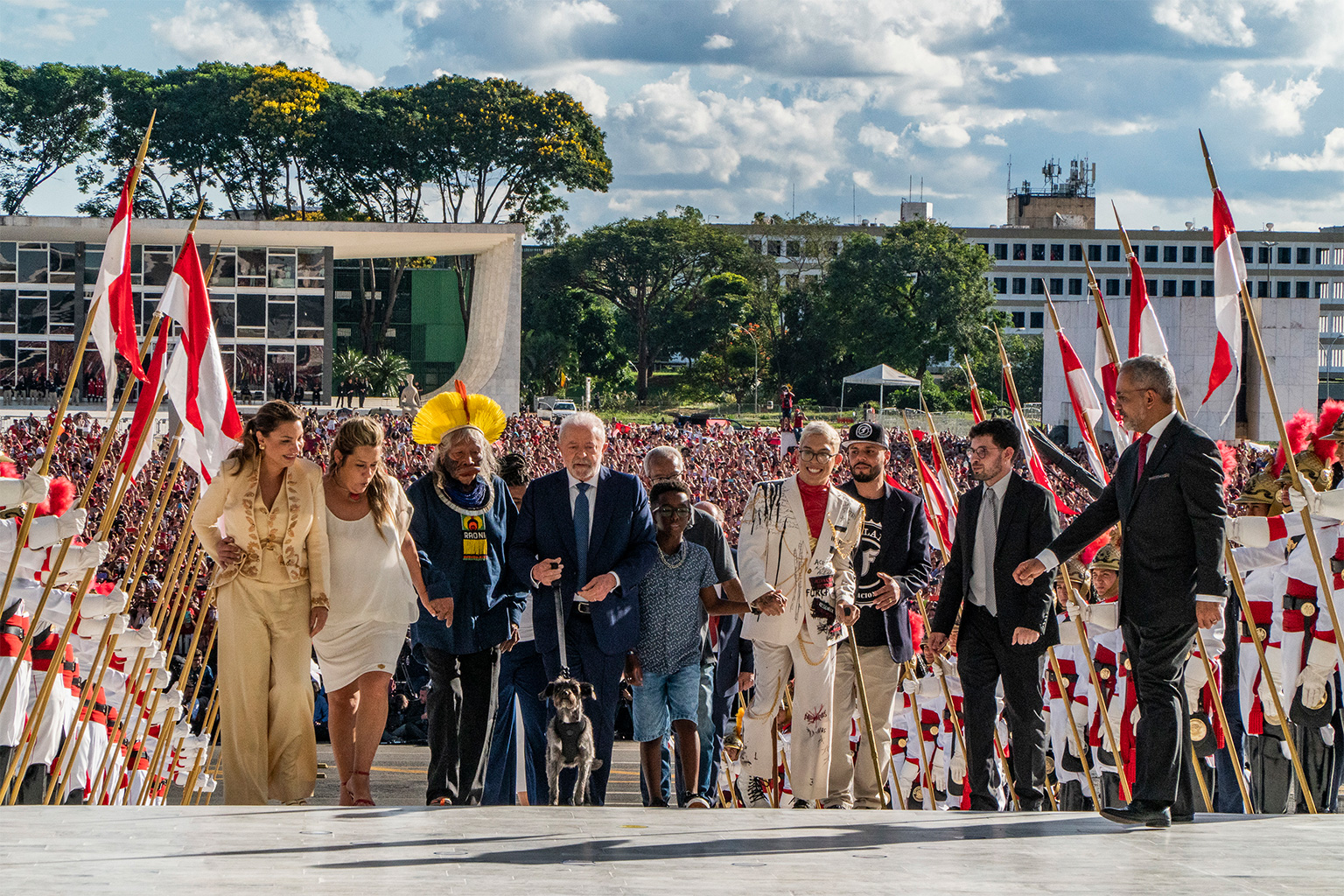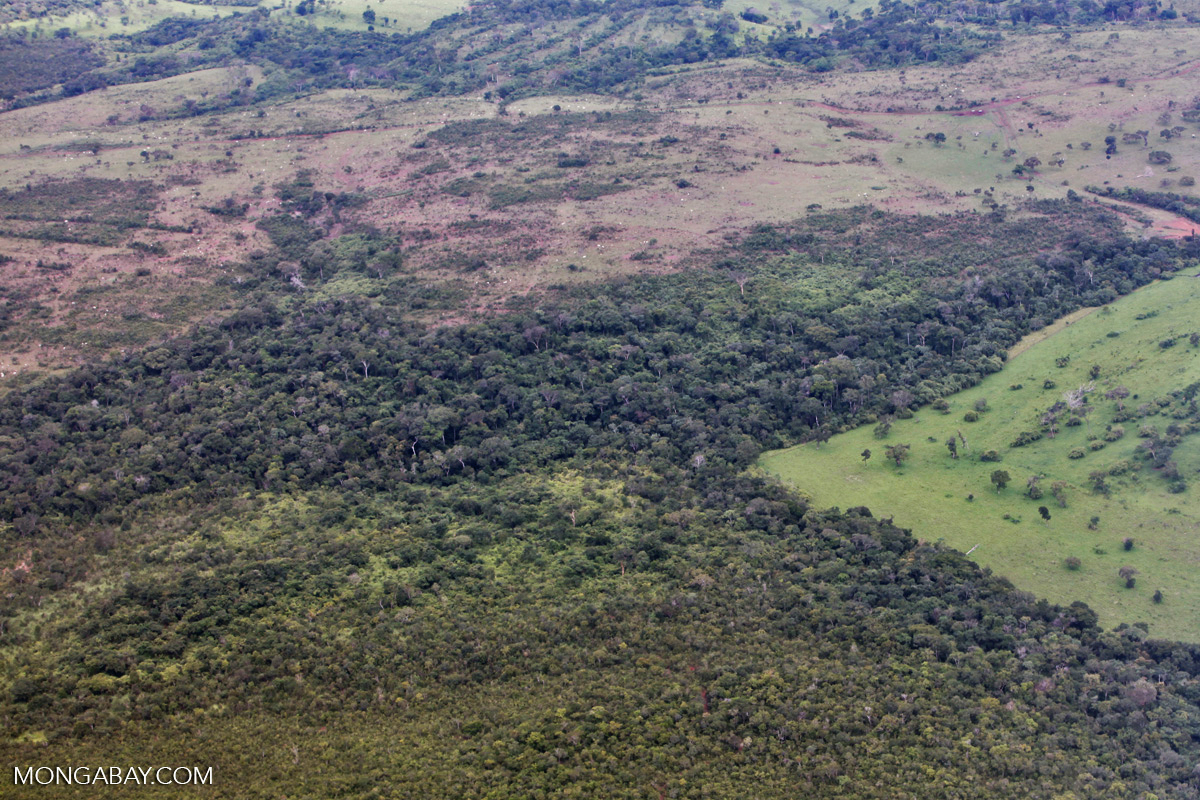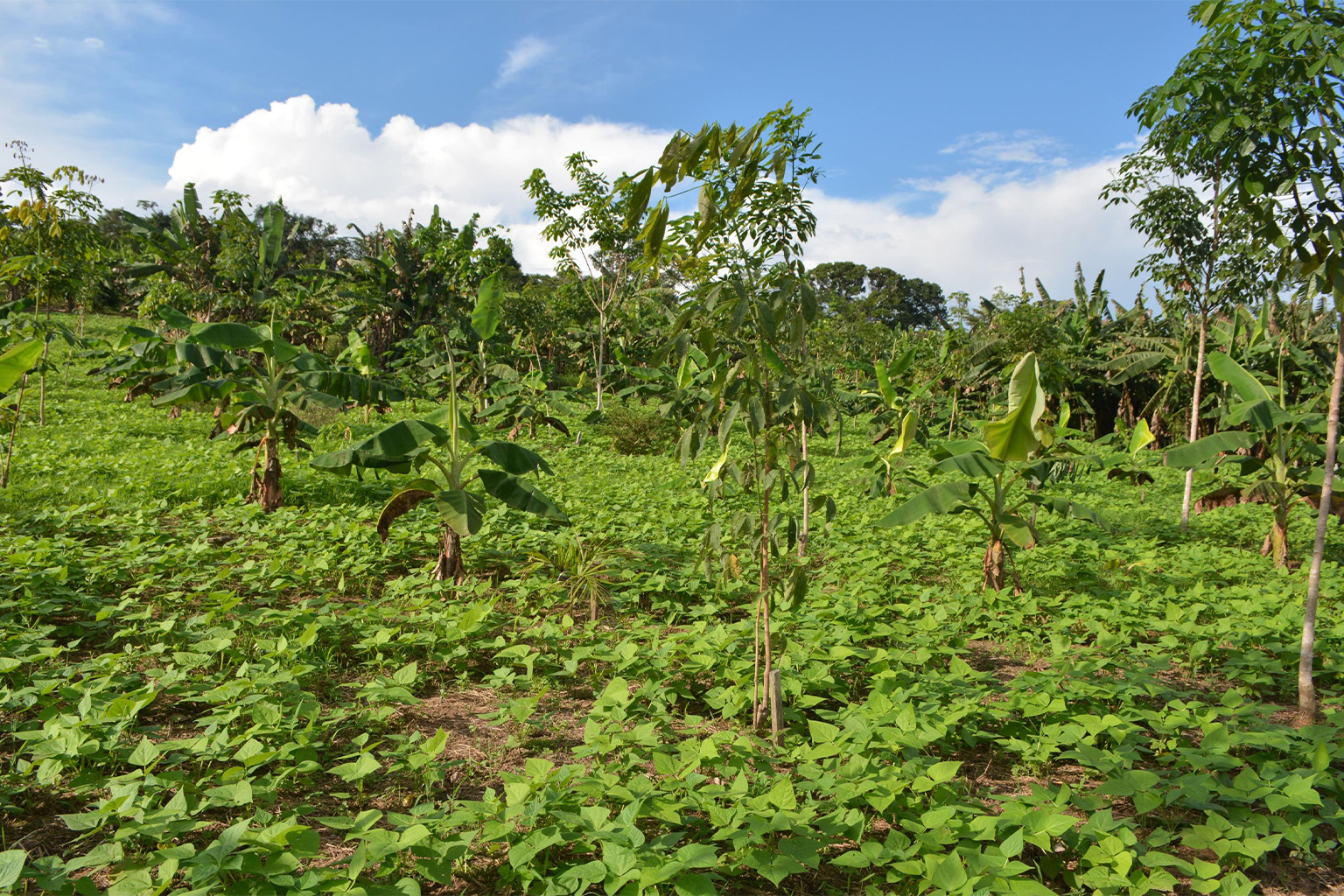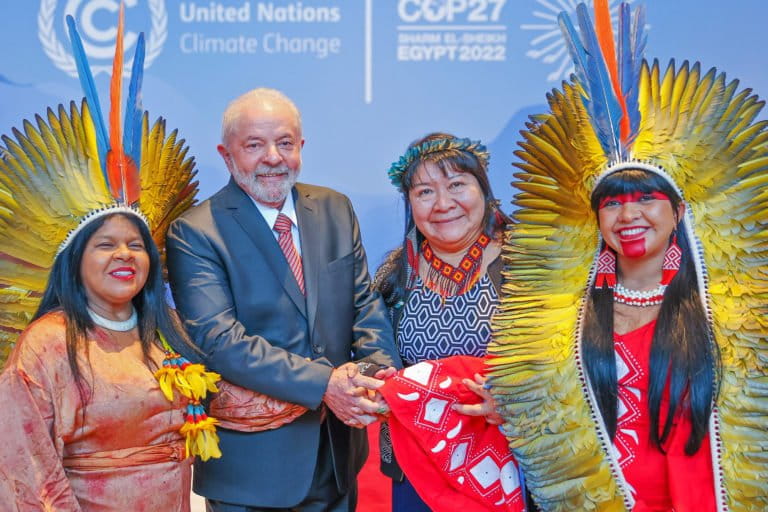- Luiz Inácio Lula da Silva, Brazil’s new president, took office and promised to halt deforestation and to restore degraded land but plans to regenerate deforested areas remain unclear.
- The Science Panel for the Amazon at the COP27 climate summit provided the scientific basis to guide debates and decisions around the large-scale recovery of deforested and degraded areas.
- The most significant opportunity for large-scale and low-cost restoration is concentrated in public forests, protected areas and Indigenous lands that have suffered recent degradation.
- For areas with high levels of degradation, especially on private lands, productive restoration models capable of providing sustainable economic development are the main bet.
At his inauguration on Jan. 1 as Brazil’s new president, Inácio Lula da Silva reiterated a promise to reach zero deforestation and to recover degraded land. He’d already made the same commitment in a speech at the COP27 climate summit in Egypt in November — an event that the outgoing president, Jair Bolsonaro, notably missed.
The plans to restore state control over the rainforest to curb deforestation and other criminal activity after four years of Bolsonaro’s policies are already in place. But projects to restore forests and degraded farmlands remain sketchy.
Some attempts to provide greater detail emerged from the Science Panel for the Amazon (SPA) at COP27, which presented the policy brief “Transforming the Amazon through ‘Arcs of Restoration.’” The report provides the scientific basis to guide debates and decisions around the large-scale recovery of deforested and degraded areas of the Amazon Rainforest. Reversing the current destruction is crucial to climate change mitigation, biodiversity conservation, and the social well-being of local populations, but the effort depends on multiple factors, starting with halting deforestation.
“There’s a great opportunity for restoration because of a great need,” Jos Barlow, a professor of conservation science at Lancaster University in the U.K. and one of the report’s authors, told Mongabay by phone. “This policy brief helps reduce the risks of the effort failing, of the proposed actions not generating the expected benefits.”
Approximately 17% of the Amazon has already been deforested. Another 17% is in various stages of degradation from selective logging, fire, forest fragmentation, bad land use, and other disturbances. According to experts, restoration efforts can work in these degraded areas, where primary forest is still present in the landscape.
“We have different degradation scenarios in the Amazon, and we need to know how to act in each of the spaces,” Joice Ferreira, a researcher at the western Amazonian branch of Embrapa, Brazil’s agricultural research agency, told Mongabay by phone. Ferreira was also a co-author of the policy brief.
An obvious first step
The worst of the degradation is concentrated in the region known as the Arc of Deforestation, along the eastern and southern edges of the Brazilian Amazon, where rates of forest loss have been the highest in recent decades. This part of the rainforest suffers from land grabs, illegal logging, mining in protected areas, and other crimes that drive a boom-and-bust economy. This climate of criminality has been bolstered by Bolsonaro’s environmental policies, which emboldened those destroying the rainforest and led, among other disasters, to the intentional burning of large areas on the “day of the fire.”
Given the current scenario, experts say the first step to fixing the problem is to restore the rule of law in the Brazilian Amazon, by strengthening environmental protection and rooting out criminal elements to prevent new areas from being deforested and degraded.
“It doesn’t make sense to invest in an area for restoration while degradation occurs next door,” Pedro Brancalion, a professor of forest sciences at the University of São Paulo, another co-author of the report, told Mongabay by phone. “It is essential to isolate fire, prevent cattle access, and control other illegal processes.”
Other governance actions are also considered essential, such as allocating staff and funding to implement laws and policies on restoration plans. These include the new Forest Code and the National Plan for Native Vegetation Recovery. The policy brief also calls for resolving conflicts over land tenure and articulating rigorous commitments between those who produce commodities in the Amazon and the countries that import those commodities — especially beef and soy, the main drivers of agriculture-led deforestation in the Amazon.
Danielle Celentano, an environmental consultant who studies restoration, said policies must be created at the local rather than federal level, given that the Amazon is diverse and requires specific restoration solutions in different locations. “The approach for small farms of poor producers is not the same as for large farms,” she told Mongabay by phone. “We have to create local leadership capable of making these articulations and taking decisions.”

Restoration in action
Large-scale forest restoration in the Brazilian Amazon isn’t commonplace yet, and will require strategic planning based on up-to-date data to work out. “Today, we have an extremely undesirable universe of incomplete information that hinders more intelligent planning,” Rita Mesquita, a researcher and graduate program coordinator at National Institute for Amazonian Research (INPA), told Mongabay by phone.
Restoration projects must also strike a balance between climate solutions and biodiversity conservation, two efforts that don’t always track with each other, she said. Reforestation for carbon capture, for example, is typically focused on planting as many trees as possible, without any consideration for creating an actual habitat for wildlife. These initiatives also need to consider models that can benefit the people living in the areas to be restored, Mesquita added.
Plans are most effective when implemented at the landscape or watershed level, the researchers said, with an immediate effect on the protection of biodiversity and water resources. But areas where advanced degradation is already feeding back into a vicious cycle of climate impacts can’t be ignored either, as in the southern portion of the Amazonas state and the southeast of Pará state.
“Choices need to be made because the scenario is very complex,” Mesquita said. “I think this debate still needs to be started to clarify the maximum possible benefit from the restoration actions.”
Experts agree on one point: the most significant opportunity for large-scale and low-cost restoration is concentrated in public forests, protected areas, and Indigenous lands that have suffered recent degradation. These areas have healthy primary forests around them and can regenerate without human intervention.
“Before all, you must look at areas where the forest can recover naturally, where there are good seed sources and lands that are not yet tired from misuse,” Barlow said.
Where the degree of degradation is more severe, it’s possible to accelerate natural regeneration with timely interventions, such as planting specific seedlings, controlling vines and other unwanted plants, and preventing fires.
“The assisted restoration is an important model because we want the benefits of recovery on a human time scale,” Brancalion said. “We already have a set of actions to accelerate the natural process.”

To restore a forest from seedlings and recover its carbon-capturing capacity to 80% of its pre-degraded state takes 20 years, he said. “Already in the second or third year, we have good recovery of the soil, the vegetation cover, the movement of fauna.”
The challenge of large-scale restoration intensifies when the goal involves severely degraded lands, as suggested by Lula, where the rainforest landscape is broken up by vast clearings — lands burned or abandoned after years of improper use. Recovering this fragmented ecosystem is difficult, slow and expensive, but a growing number of solutions are emerging.
Experts say the priority for severely degraded land is landscape healing: reconnecting fragments of forest to restore vegetation cover and ecological processes. This work can be done by creating seedling islands (known as nucleation), seeding large areas, or combining both techniques. One innovative example was carried out on a former cattle ranch in Cotriguaçu municipality, in Mato Grosso state, in the heart of the Arc of Deforestation, where an ecological corridor for wildlife was created after 20 years.
However, Brancalion said the best bet to restore areas that are highly degraded, especially on private lands, is productive restoration that can provide sustainable economic development for local populations and break the boom-and-bust economic model associated with burning and deforestation.
“We think of the restoration as an activity, a new land use. It is an illusion to think that we will achieve ambitious goals without a profitable model that makes the producer give up the destructive processes of today,” Brancalion said. “We have to think with landowners about restoration models that meet environmental objectives and are also productive.”
Agroforestry future?
Agroforestry is growing increasingly popular as one of the main models for restoring forests while allowing income generation. The Alliance for the Restoration in the Amazon, a coalition of Brazilian and international institutions working to promote forest recovery, identified 1,643 such projects in 2022, almost all small-scale. Although agroforestry doesn’t result in the complete recovery of the forest, these initiatives offer environmental benefits, especially with the restoration of vegetation cover and the sustainable use of soil and water.
“Agroforestry systems don’t solve major biodiversity or carbon issues, but there is still an improvement,” Barlow said. “To address large-scale restoration, we must think about all the existing systems.”
The main advantage of agroforestry is the focus on human welfare, by ensuring food security, employment, and income for families who live in degraded and poor areas of the Amazon. “The restoration agenda has the chance to create a new paradigm, but it needs to focus on people,” said Celentano, the environmental consultant. “It is necessary to address the social aspect of the Amazon so that the restoration models do not become a new vector of social conflicts.”
Agroforestry systems offer tremendous flexibility when it comes to the crops and other products that users can benefit from. Low-impact timber extraction, açaí berries, medicinal plants, corn, coffee, cocoa, pumpkins, and beans are just some examples already being produced in various parts of the Amazon. By employing a diverse model, farmers become more resilient to economic crises and price fluctuations, which reduces the chance they will return to activities associated with fire and deforestation.

Judson Ferreira Valentim, who coordinates Embrapa’s Amazon program that offers a kit of solutions for rural producers in the region, said the success of agroforestry systems depends on public policies. Besides technical support, landowners need to access credit and the markets through cooperatives and associations. “The producers need help to leave the culture of fire aside to adopt these new systems,” he said.
The Science Panel for the Amazon cites Brazil’s National School Feeding Program, which buys large quantities of agroforestry products and contributes to strengthening that supply chain, as an excellent example of an incentive policy. The SPA policy brief also highlights the importance of empowering local communities, women, and youth, considered vital elements for driving change.
One potential risk with agroforestry systems is when income gets so attractive that the project loses its restoration focus. To avoid that, it’s necessary to assess the quality of the restoration, experts say. A new publication offers recommendations for monitoring this through a series of ecological and socioeconomic indicators of restoration: measuring the contribution to mitigating climate change, conserving biodiversity, and generating quality of life, work and income.
“Agroforestry systems have a huge potential for restoring degraded areas associated with sustainable development,” said Celentano, editor of the publication. “It’s necessary to find models that take both objectives into account, without distorting the proposal to an overly commercial bias, with few products.”
Mesquita, from INPA, said it’s crucial to establish restoration goals in the Amazon. “Successful restoration is much longer than I have seen in some modeling studies,” she said. “To think that restoration is a simple path is an optimistic message that we should not be giving.”
Amid the debates about forest restoration in the Amazon, the new administration has hinted it also plans to convert some degraded lands, especially abandoned pastures, into agricultural areas. The proposal would allow an increase in Brazil’s food production without further deforestation.
Carlos Favaro, Lula’s new agriculture minister, said the government will open credit lines to recover degraded areas and promote good agricultural practices. “The idea is that in 20 years we can double the productive area and take the pressure off deforestation.”
Banner image: Brazil’s president Luiz Inácio Lula da Silva said at his inauguration and at the COP27 climate summit that climate mitigation will be his administration’s highest priority. Image courtesy of Ricardo Stuckert.
FEEDBACK: Use this form to send a message to the author of this post. If you want to post a public comment, you can do that at the bottom of the page.
Related reading:
Report offers a road map to restore the rule of law in the Brazilian Amazon
This story first appeared on Mongabay
South Africa Today – Environment
This article is licensed under a Creative Commons Attribution-NoDerivatives 4.0 International License.
You may republish this article, so long as you credit the authors and Mongabay, and do not change the text. Please include a link back to the original article.












